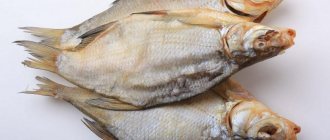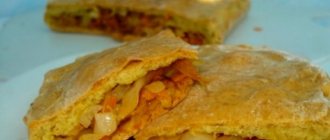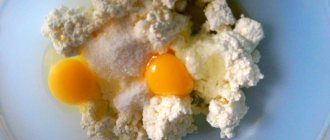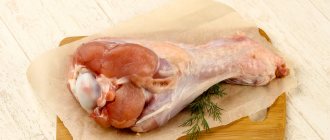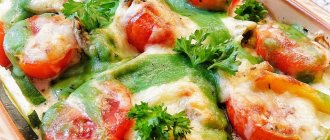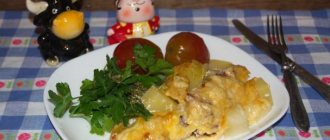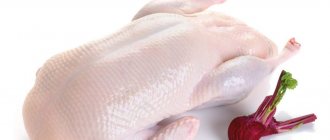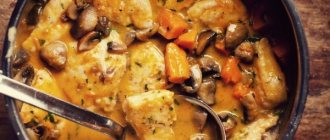Chickpeas are also called garbanzo beans. It is one of the oldest consumed crops in the world. In fact, chickpeas have been part of the traditional diet for over 7,500 years because they are very large health benefits of chickpeas.
Today, chickpeas remain one of the most popular legumes on almost all continents. Second to soybeans, chickpeas are the next most widely grown and consumed crop in the world. Chickpeas continue to be included in the diets of some of the healthiest populations living around the world. Including those who eat traditional dishes from the Middle East, Mediterranean and African countries. And this is regardless of whether we are talking about whole chickpeas or chickpea flour.
What are chickpeas? Chickpeas are a type of legume that offers tremendous health benefits. Legumes belong to the pea family. Common edible legumes include peas, lentils, soybeans, various beans, and peanuts.
Why are chickpeas good for the human body? It helps improve digestion, increases satiety and protection against metabolic syndrome, maintains blood sugar levels and much more. Chickpeas contain a large amount of vitamins, proteins and minerals. Therefore, it is included in many therapeutic diets, including the Ayurvedic and Mediterranean diets. It is included in common recipes found all over the world. It is the main ingredient in hummus and is commonly consumed almost daily in Israel, Syria, Turkey, Palestine, Jordan and Egypt.
Nutritional value of chickpeas
Chickpeas, or garbanzo beans, are an extraordinary source of plant-based protein. As well as iron, phosphorus, fiber, zinc, B vitamins and much more.
Are chickpeas a protein or a starch? It does contain starch and protein. Legumes are a nutrient-rich food containing a combination of starch, fiber, protein and minerals. Another benefit of chickpeas is that they are low in calories. We immediately ask ourselves the question – are chickpeas a “great carbohydrate”? And we get a positive answer. Because the starch it contains is digested quite slowly and maintains stable blood sugar levels.
164 g of boiled chickpeas contains approximately:
- 269 calories
- 45 g carbohydrates
- 14.5 g protein
- 4.2 g fat
- 12.5 g fiber
- 1.7 mg manganese – 84% DV
- 282 mcg folate - 71% DV
- 0.6 mg copper – 29% DV
- 276 mg phosphorus – 28% DV
- 4.7 mg iron – 26% DV
- 78.7 mg magnesium - 20% DV
- 2.5 mg zinc – 17% DV
- 477 mg potassium – 14% DV
- 0.2 mg thiamine – 13% DV
- 0.2 mg Vitamin B6 – 11% DV
- 6.1 mcg selenium – 9% DV
- 6.6 mcg Vitamin K – 8% DV
- 80.4 mg calcium – 8% DV
- 0.1 mg riboflavin – 6% DV
- 0.5 mg pantothenic acid – 5% DV
Chickpeas also provide some vitamin A , vitamin C, vitamin E and niacin.
Chicken soup with chickpeas
When thinking about what to cook from chickpeas at home, you should pay attention to the first courses. Soup with peas and vegetables in chicken broth turns out to be quite satisfying and tasty. Wings, thighs and drumsticks are great for soups.
Ingredients:
- Chicken – 300 g.
- Chickpeas – 150 g.
- Onion – 1 pc.
- Water – 2.5 l.
- Carrots – 0.5 pcs.
- Bell pepper – 50 g.
- Celery – 1 stalk.
- Parsley - to taste.
- Vegetable oil - for frying.
- Salt - to taste.
Way:
- Cook the chickpeas for about 30 minutes, then add the chicken and cook for another half hour.
- Grate the carrots on a coarse grater, finely chop the pepper, onion, and celery. Fry the vegetables in oil.
- If the meat has bones, remove them. Add vegetables, salt and herbs. Bring to a boil, turn off the heat, cover with a lid.
TOP – 8 benefits of chickpeas for human health
What are the benefits of chickpeas for human health? Containing so many nutrients and vitamins, chickpeas provide incredible benefits to the human body in various ways. Namely:
1.Chickpeas Health Benefits of Providing Slow-Releasing Carbohydrates
Chickpeas, like all legumes, come in the form of a complex carbohydrate that our bodies digest slowly and use for energy. This is important because carbohydrates are not all the same. Some of them can instantly increase blood sugar levels, which leads to interruptions in energy. Such carbohydrates are called fast or simple carbohydrates. Others do the opposite and provide us with sustainable energy. These are complex carbohydrates.
Even low-carb diets require at least 25 grams of carbohydrates per day. And a small serving of chickpeas can help provide some of those carbohydrates.
2.Health Benefits of Chickpeas in Helping Control Blood Sugar Levels
Are chickpeas good for a low carb diet? In most cases it is suitable because it is considered a “slow carbohydrate”. Chickpeas contain starch, which is a slow-burning carbohydrate. The starch in chickpeas takes a long time to digest after consumption. This distinguishes it from carbohydrates contained in processed foods - refined flour, white bread, pasta, candy, etc.
Are chickpeas good for diabetics? Chickpeas are a safe source of carbohydrates, even for people on a low-carb diet. Starch contains natural sugars - glucose, which is easily used by the body to perform various important functions. But glucose can cause problems in people with prediabetes or diabetes. The process of digestion and utilization of glucose contained in all beans and starches is lengthy. This is extremely important for diabetics who control their blood sugar levels.
3.The health benefits of chickpeas include increasing satiety and aiding in weight loss.
Chickpeas are rich in protein and fiber, which helps you feel fuller for longer. Research has shown that fiber intake correlates with weight loss. Beans are a great addition to any recipe due to their fiber, protein, and complex carbohydrates.
Chickpeas contain macronutrients that work together to make us feel full after eating. They also help control blood sugar levels and therefore maintain our energy. Often, eating fat-burning foods is an excellent way to properly and sustainably lose weight . When we feel full, we are less likely to snack on low-calorie foods, which can hinder weight loss.
Chickpeas become even more filling when combined with other nutritious whole foods. For example, with vegetables or goat cheese. These foods are low in calories but high in protein and fiber. This is an ideal food for those who need to lose weight.
4.The health benefits of chickpeas include improving digestion due to their high fiber content.
Chickpeas are one of the best foods with a high fiber content of approximately 6 to 7 g per 164 g. Unfortunately, nowadays people eat foods that are low in fiber, causing fiber deficiency.
The main benefit of chickpeas for the body is to reduce constipation. Fiber promotes healthy digestion by moving foods quickly through the digestive tract, reducing constipation and IBS symptoms. Fiber works by drawing fluid from the body and binding it to the bulk of stool that contains toxins and waste. Which must certainly be removed from the body. Fiber also helps balance bacteria and pH levels in the gut, increasing the number of good bacteria while decreasing the bad ones. An imbalance of gut flora bacteria is often associated with many digestive problems.
The huge amount of fiber in garbanzo beans is responsible for the filling effect and helps improve digestion. Fiber promotes heart health, protects against cancer, diverticulosis, kidney stones, PMS, and obesity. It also helps control blood sugar levels and much more.
5.Health Benefits of Chickpeas in Protection Against Heart Disease and Cancer
The health benefits of chickpeas include supporting heart health in several ways. By eating chickpeas, the body balances unhealthy cholesterol levels and reduces hypertension. The body also becomes protected from heart disease in several ways.
This is partly due to the high fiber content of chickpeas. It prevents overeating, weight gain and the formation of internal fat around vital organs. In the digestive system, fiber promotes the formation of a gel-like substance that binds to fatty acids, thereby helping to balance cholesterol levels. Research has shown that both soluble and insoluble fiber play an important role in the control and management of hypertension.
Beans help clear arteries from the formation of blood clots and maintain normal blood pressure levels . It also reduces the likelihood of stroke and cardiac arrest. Based on research, eating just 1 serving of legumes reduces the likelihood of heart attacks and balances “bad” LDL cholesterol.
Animal studies have shown that eating beans provides protective properties against cancer, particularly colon cancer. This is due to the high fiber content. In studies conducted on mice, they were fed garbanzo beans to stop the formation of cancer cells. Beans protect the digestive system, including the colon, from harmful bacteria and toxic buildup. They create a healthier environment where pH levels are balanced and inflammation is reduced. And, as a result, cancer cells cannot multiply as they would in an unhealthy environment.
6.The health benefits of chickpeas include providing essential vitamins and minerals (including folate and zinc)
Chickpeas contain high levels of folate, B vitamins, iron, phosphorus and zinc. This is very important for vegans and vegetarians. By avoiding animal products, they may lack these nutrients. Chickpeas also contain folic acid. Folate promotes the formation of new cells in the body as it plays a role in DNA copying and synthesis. It also helps the body use other B vitamins in addition to protein (in the form of amino acids).
Folic acid deficiency leads to anemia, poor immune function and poor digestion. Pregnant women with folate deficiency are at risk of developing neural tube defects such as spina bifida. Chickpeas also contain zinc . Zinc is an essential trace mineral that plays a role in more than 100 important enzymatic reactions in the body.
7. Health Benefits of Chickpeas: Alkalinizing Effect
Beans help alkalize the body, helping to balance pH levels by combating high acidity levels. High levels of acidity predominate in the diet of most modern people. When chickpeas are combined with a source of healthy fat, such as olive oil, nutrient absorption is increased. An example would be hummus. In addition, chickpeas contain 3 nutrients that help reduce common symptoms associated with PMS: manganese, magnesium and vitamin B6 .
Since chickpeas are alkalizing, they are a healthy addition to an alkaline diet .
8.Excellent source of plant protein
Are chickpeas a source of protein? Yes, especially if you follow a vegetarian or vegan diet.
Protein is an essential macronutrient that plays an important role in almost all body functions. These are vital organs, muscles, tissues and even hormone levels. Eating enough healthy protein helps slow down aging. The proteins we get from our diet contribute to the production of hemoglobin and important antibodies and control blood sugar levels. They also help build and maintain muscles, give us long-lasting energy, and fight bacteria. They nourish our body and help heal wounds and injuries.
Chickpeas contain not only important protein, but also many other nutrients and fiber. Children, vegans and vegetarians consume the least required amount of protein. A constant lack of protein can lead to increased fatigue, muscle weakness, lack of energy, and eye problems (cataracts). There may also be problems with the heart, skin, unbalanced hormone levels and much more.
Chickpeas are an important source of vital plant protein. This is a great choice for those who don't eat meat. Chickpeas are often eaten with grains or vegetables. For example, in a stew or in hummus, which is eaten with pita bread. These foods work together to form a “complete protein.” This means they contain all the building blocks of protein, called essential amino acids. They are necessary for the body to function properly.
Recipe 3. Roasted chickpeas in the oven
- chickpeas 250 g
- mixture of exotic spices “panch puren” 1 tsp. (fennel, cumin, kalonji onion seeds, fenugreek seeds, mustard)
- olive oil 2 tbsp. l.
Soak the chickpeas in plenty of water overnight (12 hours), drain the water the next day, rinse the chickpeas, add fresh water (I poured boiling water) and cook.
To prevent the process of gas formation, it is recommended that after 30 minutes. cooking, drain the water, rinse the chickpeas, add fresh water and cook until tender. I cooked for 1.5 hours.
Place the finished chickpeas on a sieve and dry.
Cover a baking sheet with foil (shiny side up), add chickpeas, salt, sprinkle with spices, add olive oil and stir. Spread the chickpeas into one layer and place in an oven preheated to 200* for 30 minutes.
Stir several times during baking.
The chickpeas are crispy on the outside with a salty-spicy crust.
Chickpeas in Ayurveda and Traditional Chinese Medicine
Chickpeas are widely used in the cuisines of India, where the Ayurvedic diet first emerged. And also in some Asian countries where Traditional Chinese Medicine (TCM) is still practiced today.
- Chickpeas are commonly used to make curries and are one of the most popular vegetarian dishes in India, Pakistan and Bangladesh. In these countries, vegetarian diets have historical significance. In India, chickpeas are called kadale kaalu (Kannada) or chana. For people who don't eat meat or animal products, chickpeas and other beans are a major source of protein.
- You can find chickpeas in many varieties of dal (also called dhal) included in Ayurvedic cooking and consumed almost daily. Legumes/beans are considered valuable because they are very inexpensive yet excellent sources of nutrition.
- According to Ayurveda, legumes are astringent in taste. Beans are said to increase vata energy. This means they support higher energy levels, but can also promote gas and dryness. It is recommended to always cook chickpeas with plenty of oil and garlic to reduce dryness and support digestion. Chickpeas are said to help in the formation of body tissues, including muscle tissue.
- In Ayurveda, beans are almost always soaked before cooking and combined with spices to aid digestion. Spices that are used with chickpeas include asafoetida (hing), cumin, fresh ginger, turmeric and black pepper. They reduce bloating or gas.
- In Traditional Chinese Medicine, legumes/legumes are an important source of fiber, antioxidants, protein and many other nutrients. It is recommended to eat beans for the proper functioning of major organs and to prevent the formation of diseases. Black foods, including black chickpeas and black beans, are especially prized for their ability to support kidney and liver health.
- TCM recommends combining beans with rice or other whole grains to make a complete source of protein.
- According to TCM theory, the benefits of eating chickpeas include strengthening the heart muscle, facilitating bowel movements, and protecting against cancer. As well as strengthening the body and losing weight. This also applies to legumes such as adzuki, mung, black and white beans.
Who should not eat chickpeas?
If you have a weak intestine that is prone to flatulence, you should still avoid eating chickpeas. Peas are gradually introduced into the diet of older people, because their intestinal muscles weaken over the years.
Also, chickpeas should not be consumed by breastfeeding women if the baby is under four months old. In this case, chickpeas can intensify the course of infant colic, the child will suffer from a storm in the stomach. Chickpeas can be quite aggressive to the urinary system.
If you have bladder problems, the use of this product should be limited. Acute kidney diseases, gout, thrombophlebitis, gastritis - all this is a contraindication for eating chickpeas, because the product is considered quite heavy, it increases the production of urea.
In addition, there is such a thing as “individual intolerance”. If you've never eaten chickpeas before, start trying the product in small portions.
Chickpeas compared to garbanzos
Chickpeas and garbanzo beans are the same thing (from the same plant family). Just two different ways of describing the same legume.
Chickpea beans grow on trees and as a seed pod containing 2 or 3 peas. They look like green pea pods. There are over 17 different varieties of chickpeas, but we primarily eat three types of chickpeas or garbanzo beans.
Desi chickpeas, which are mainly grown in India and have small, darker seeds and coarse wool; Bombade chickpeas, which are commonly harvested in India but are larger in size; and Kabuli chickpeas, which originate from Europe or Africa and are large in size and have a smooth coat. All three types provide the same health benefits and can be used interchangeably.
Desi chickpeas are mainly grown in India. It has darker seeds. Bombay chickpeas – These are also native to India and are larger. Kabuli chickpeas are native to Europe or Africa and are quite large. All 3 types are equally beneficial for human health and can be replaced with each other without damage.
Most grocery stores sell chickpeas in white or beige, but they come in other colors as well. For example, you can find pink, green or black chickpeas in some health food stores. Black chickpeas are common in India and are sometimes called kala chana. Is there a nutritional difference between white and black chickpeas? In general, they have similar characteristics and are equally beneficial for the human body. The black color of some chickpea varieties indicates their content of certain antioxidants , especially polyphenols and flavonoids.
Where to buy and how to use chickpeas
What does chickpea taste like? Chickpeas are one of the most versatile beans in terms of flavor. There is no bitterness and less earthiness than other legumes. It has a firm texture and a flavor that is sometimes described as soft and nutty. When pureed, chickpeas can be an excellent addition to spreads, batters and sauces.
Here are some questions you may have:
Which chickpeas should I buy?
Chickpeas can be found dried, canned or frozen. There is an opinion that it is better to purchase chickpeas in the form of cereals.
Canned beans are an excellent option when you're short on time. But there is a danger that many canned food manufacturers use chemicals in the lining of their jars. This is a toxin that should be avoided.
Try to purchase canned beans that are certified "BPA-free" to prevent the presence of this chemical. Beans, both canned and frozen, have the same amount of nutrients as fresh beans. Therefore, if you purchase high-quality varieties of beans, you can enjoy them without fear.
Dried beans stay fresh for a long time, so you can buy large quantities without worry.
Why do you need to soak chickpeas?
It's best to soak all dried beans overnight before cooking to reduce their cooking time. This will also help the body absorb their nutrients better. Beans should be soaked for 12-24 hours before cooking. This will significantly reduce their cooking time from 2 hours to about half an hour.
There are some concerns about phytates and tannins. The listed substances are found in all varieties of legumes. This is one of the most important reasons for soaking beans. These compounds are called "nutrient blockers" because they reduce the availability of nutrients in some cases. Soaking and sprouting beans helps eliminate phytic acid and significantly increases nutrient absorption. It also increases the digestibility of beans by the body and reduces gas formation.
Currently, such cooking methods as fermentation of sourdough or sprouting have ceased to be practiced. With these methods, the phytic acid found in the beans is largely destroyed. Therefore, modern people consume it in larger quantities than before and this is a significant health problem.
Diets high in phytic acid can create mineral deficiencies and contribute to bone loss. As well as the formation of leaky gut syndrome , osteoporosis, caries and many other diseases. Most of the minerals and vitamins found in beans are bound to phytic acid, making them difficult to absorb. Phytic acid reduces the amount of available minerals in food and also leach minerals from the teeth and bones where they are found.
To prevent consuming too high doses of phytic acid, it is best to purchase non-GMO beans. Since the content of phytic acid is higher in products that are grown using high-phosphate fertilizers. This is in comparison to foods that are grown in natural compost. Also soak and sprout the beans - this helps reduce phytic acid by approximately 50% - 100%.
Is it necessary to rinse chickpeas?
It is best to rinse canned beans. This will reduce the sodium it contains and freshen its taste. Canned and rinsed beans can also be simmered in some vegetable broth to improve their flavor and volume.
Can you eat raw chickpeas?
You should not eat chickpeas raw. The chickpeas must be ripe and cooked before use. Otherwise, it is very difficult to digest and many of its nutrients will not be absorbed.
How to cook dried chickpeas?
Soak beans to reduce cooking time. Beans should be boiled in a ratio of 3 (glasses of water) : 1 (glass of dried beans). They should simmer for approximately 1.5 - 2 hours over low heat. They are ready to eat once they become soft. The beans can be cooked for use and frozen.
How to cook canned chickpeas?
Canned chickpeas are ready to eat, so there is no need to cook them again. It can be reheated. It's best to reheat them in a broth (like bone broth) to give them more flavor.
How to cook roasted chickpeas?
Roasted or baked chickpeas can be easily cooked in the oven. Once the chickpeas are cooked, add a little butter to a shallow baking dish. Then place the chickpeas in the pan and fry them for about 15 minutes. Try adding spices or a sauce like tamari to give the chickpeas some extra flavor.
Fried chickpeas sweet crispy in cinnamon
Rinse the chickpeas and soak in clean cold water for 10-15 hours, changing the water 1-2 times. After this, cook the chickpeas until tender, but do not allow them to become overcooked. When the chickpeas are ready, drain the water and dry the peas a little. In order to prepare a sweet version of this snack, you need to generously sprinkle the chickpeas with cinnamon. For a spicy option, sprinkle with curry, paprika or any other spices.
After this, place the peas in one layer in a mold, place in an oven preheated to 190 degrees and bake for about 40 minutes. If the warm air in the oven is distributed unevenly, then the chickpeas need to be stirred several times so that the peas cook at the same time.
As a result of cooking, the peas should become empty inside and crisp. After this, if desired, the sweet version can be sprinkled with powdered sugar. You can store the finished chickpeas in a jar, but put the peas in a bowl when they have cooled down.
Chickpea Recipes
Chickpeas are enjoyed almost all over the world, which is not surprising given their versatility, delicious taste and numerous benefits. How to use chickpeas?
- One of the most popular things to do with chickpeas is to make hummus, an olive oil spread. Is hummus good for the body? Yes! The benefits of hummus are similar to chickpeas. However, hummus is also healthy because it contains healthy fats from tahini and olive oil.
- Chickpeas can also be added to some stews, soups, taco beans, and salads. And also in some purees and baked goods.
- There is chickpea flour. It is made from dried and ground chickpeas and can be used to make gluten-free bread. Its traditional name is socca. And also flatbreads, pancakes, muffins, batter for meat or fish, for binding sauces. Chickpea flour is also called gram flour or besan.
Chickpeas are also added to Indian curries. In Portugal, it is often consumed as part of ranch, meat, legumes and pasta. In Italy and France it is served with stews, pasta and seafood. Throughout the Middle East, chickpea flour is used to make bread and pita bread. In the Philippines, chickpeas are added to desserts and sweets. In North America and Europe, chickpeas are added to salads and soups.
Try using chickpeas (called garbanzo beans in some recipes) like this:
- Delicious chickpea hummus recipe
- Blueberry and Pumpkin Pancakes Recipe
- Quinoa and Black Bean Salad Recipe
- Spiced Bean Sauce Recipe
- Zucchini Falafel Recipe
Secrets of culinary wisdom
Many culinary masterpieces are prepared from chickpeas, including:
- Hummus;
- Pilaf;
- Falafeliya;
- Soups;
- Cutlets.
Cooking chickpeas for these dishes is fundamental, which has its own nuances.
However, today, it is very convenient to cook it in a slow cooker, to save time and more correctly maintain temperature conditions. At the same time, this is a fairly simple technology.
- To prepare the base for hummus, use unpeeled chickpeas. And in order to make a tender puree from it, you need to remove the husk from the grains.
- Therefore, it is boiled for about an hour, then washed with running cold water, then filled with water again and the grains are peeled from the outer shell by hand.
- Then the resulting purified grains are soaked for at least three, or even ten hours.
- After swelling, the chickpeas are washed and placed in the multicooker bowl, pouring it three centimeters above the level of the filled grains.
- Then the multicooker is set to “Stew” mode for an hour.
- The readiness of the chickpeas is checked by crushing one bean between your fingers, which should be soft and easily compressed.
And now, having learned about the intricacies of the main process, I will tell you several recipes for preparing traditional Eastern dishes from chickpeas.
Paste or puree
Actually, this is a traditional creamy hummus that goes perfectly with vegetables such as:
- Bell pepper;
- Cucumbers;
- Fried potatoes.
Recipes for making hummus are quite simple. After multi-cooking, the boiled beans are thoroughly ground in a blender until smooth, with the following added according to taste priorities:
- Spinach;
- parsley;
- Potatoes;
- Red pepper;
- Garlic;
- Luke;
- Horseradish;
- Paprika;
- Pine nuts.
To achieve the desired consistency of hummus, vegetable broth is added to it.
History of chickpeas
Chickpeas are a legume plant of the legume family. Domesticated chickpeas have been found in regions of Turkey and Greece, with records dating back thousands of years to ancient times. It is believed that garbanzo beans were first consumed by ancient Mediterranean populations between 7,500–10,000 years ago, and then soon spread to southern France and Germany.
Chickpeas are a plant of the Fabaceae family. Records of chickpeas were first discovered in the regions of Greece and Turkey. It is believed that garbanzo beans were first consumed by ancient Mediterranean populations between 7,500 and 10,000 years ago. And then, soon after, they spread to the south of France and Germany.
In Greece, chickpeas were often included in sweet desserts and were also eaten raw. The peoples of ancient Rome added chickpeas to broths, stewed them and fried them, or prepared snacks with them. There was an opinion that in ancient times people associated chickpeas with the goddess Venus. They believed that chickpeas were very beneficial for reproductive health.
Chickpeas were subsequently used throughout the Middle East, becoming a staple in the human diet. This is still relevant today.
Chickpeas baked in the oven with spices
The recipe for crispy chickpeas in the oven is easy to prepare. The available products make a delicious and quick snack.
You will need:
- powdered sugar – 20 g;
- chickpeas – 420 g;
- cocoa – 20 g;
- sweet paprika – 2 g;
- salt – 10 g;
- black pepper – 5 g;
- curry – 10 g.
Step by step process:
- Rinse the chickpeas thoroughly. Fill with a large volume of water.
- Set aside for 12 hours. Change the fluid every 2 hours. Drain the water completely and refill with fresh filtered water.
- Place on low heat and cook for 1 hour.
- In a bowl, combine curry with salt, paprika and pepper.
- In a separate bowl, mix cocoa with powdered sugar.
- Place the boiled beans on a paper towel and dry completely.
- Roll thoroughly in different mixtures.
- Line a baking sheet with parchment paper. Sprinkle the sweet preparation on one half, and spices on the other.
- Place in an oven preheated to 180°C. Bake for 45 minutes.
The treat can be consumed even during fasting
Precautionary measures
Do chickpeas cause gas? Yes, it is quite possible that they will. Beans/legumes can increase gas and bloating due to their high fiber content. And also because of the type of carbohydrates they contain. It's best to eat small meals and soak the beans before cooking to improve digestion.
Soaking beans helps reduce certain compounds that cause digestive problems and block mineral absorption.
Can you be allergic to chickpeas? Chickpea allergies are not as common as peanut allergies, but they can still occur in some people. Stop eating chickpeas if you notice signs of an allergy, such as itching, a swollen throat, or digestive problems. As well as bloating, swelling of the eyes, etc.
Chickpeas with vegetables and basil
This cool recipe with the simplest ingredients is suitable for both every day and a large family dinner. We simply love this dish for its amazing warming taste!
- Chickpeas 1 tbsp.
- Olive oil 2 tbsp. l.
- Bell pepper 1 pc.
- Chili pepper 1/2 pcs.
- Onion 1 pc.
- Garlic2-3 cloves
- Tomatoes 3 pcs.
- Fresh chopped basil leaves 3-4 tbsp. l.
- Fresh chopped parsley 3-4 tbsp. l.
- Salt, pepper to taste
Chickpea curry with pumpkin
Ingredients:
- vegetable broth or water - 1 l.,
- pumpkin - 500 gr.,
- cauliflower - 500 gr.,
- chickpeas - 400 gr.,
- red lentils - 1 tbsp.,
- zucchini - 2 pcs.,
- onions - 1 pc.,
- garlic - 1 clove,
- curry - 2 tsp,
- unrefined vegetable oil - 1 tbsp.,
- cilantro - to taste.
Preparation:
1. Soak the lentils for 20 minutes in boiling water and cook the chickpeas.
2. Peel the pumpkin and cut into large cubes.
3. Peel and finely chop the onion and garlic.
4. Heat oil in a thick-bottomed saucepan. Add onion, garlic, pumpkin and curry. Fry over low heat for about three minutes, stirring constantly.
5. Add lentils to the pan, after draining the water in which they were soaked.
6. Pour in vegetable broth or fresh water and bring everything to a boil.
7. Reduce heat and cook for about five more minutes.
8. Cut the zucchini into cubes, and divide the cauliflower into inflorescences.
9. Add chickpeas, zucchini and cauliflower to the pan and cook for another five minutes.
10. Remove from heat, add salt and spices to taste. If desired, sprinkle with fresh cilantro before serving.
